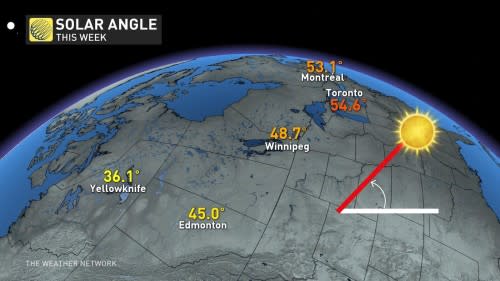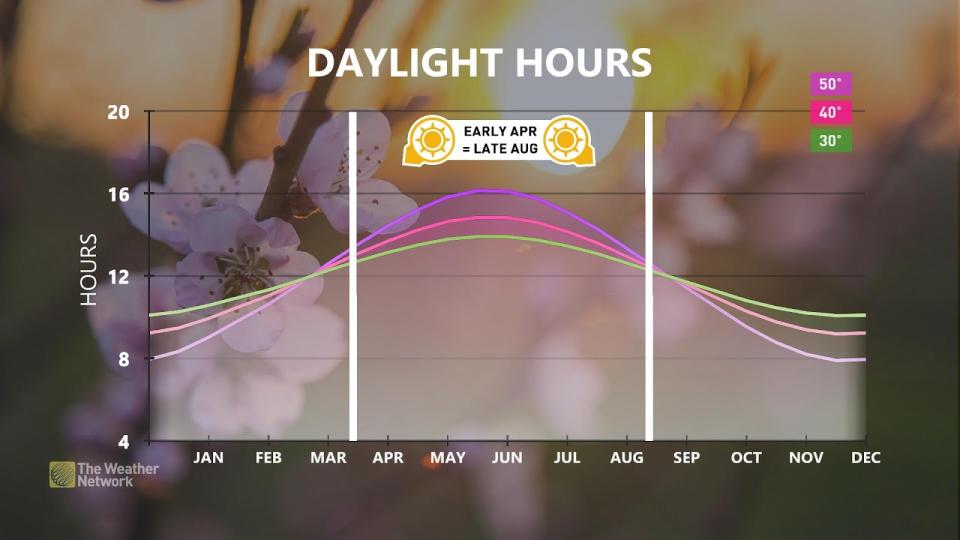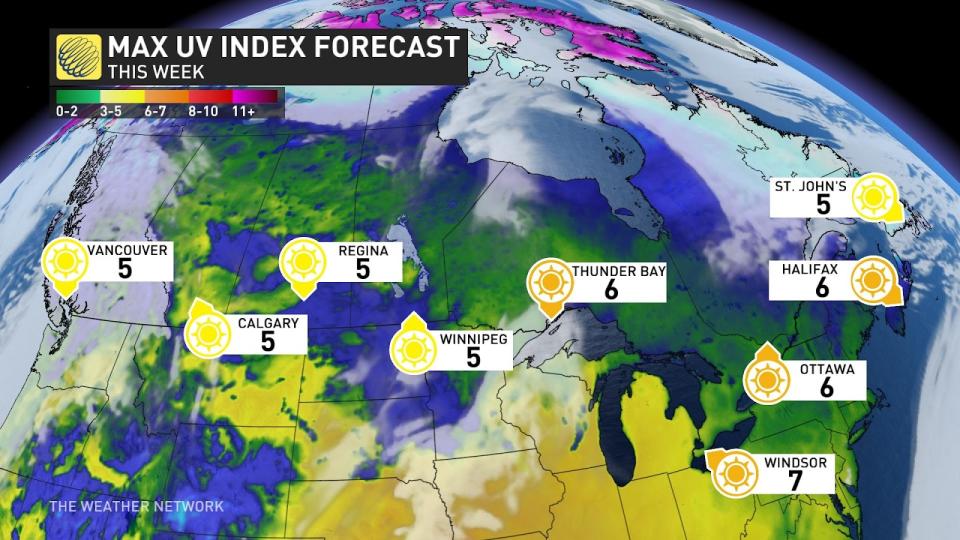This week’s abundant sunshine will pack a severe sunburn risk
Sunny skies and temperatures soaring into the teens and 20s in the coming week will draw folks outside in droves for a lengthy visit with nature.
The arrival of long-awaited spring-like weather comes with the hidden danger of sunburns, some of which could be severe without the proper protection.
DON’T MISS: Canada, you’re a year away from a once-in-a-lifetime solar eclipse
Fresh air and sunshine can do wonders for both the mind and the body, but there’s always too much of a good thing.
For the first time in four to five months, this upcoming stretch of pleasant conditions may offer an opportunity for extended outdoors time without folks donning their heavy winter gear, shedding a protective layer that blocked out more than just the cold.
This relative lack of sun exposure means that many Canadians are especially vulnerable to sunburns beneath the vibrant sunshine expected this week.

It’s almost deceiving how potent the Sun’s ultraviolet (UV) rays are this time of year.
The sun angle is creeping higher in the sky with each day as we march toward the first day of summer. This week’s sun angle is higher than 50° above the horizon in both Toronto and Montreal, which is equivalent to the late-August sun, and higher than the sun climbs over Miami, Florida, during the heart of winter.
Not many vacationers on winter break would venture onto a Florida beach without applying sunscreen. A greater sunburn risk is now present across much of Canada.

Part of the danger is that we associate sunburns with hot and humid weather. There’s no correlation between the air temperature and the potency of the daytime sun.
Cooler temperatures in the early spring can ‘trick’ us into thinking we don’t need sunscreen, making this prime time for some of the gnarliest sunburns you can suffer throughout the year.
MUST SEE: Tick season really isn’t that far off. Get equipped to face it, here
We can measure the potency of a day’s sunshine by monitoring the UV index. The danger posed by UV rays is measured against an ascending scale from 0 to 11+, with a UV index of 0 typical of dark, gloomy days, and 11 or higher seen on the brightest, most intense summer days.

Sunburns are common once the UV index reaches 3 or higher. The UV index typically peaks during the middle of the day, usually between 11 a.m. and 3 p.m.
Sun safety is an important addition to one’s daily routine now that severe sunburns can develop in a hurry. Health Canada recommends covering up and using sunscreen “labelled ‘broad spectrum’ and ‘water resistant’ with an SPF of at least 30” on days when the UV index is 3 or higher. Reapply sunscreen after swimming or drying off.
Sunglasses are an essential and often overlooked part of sun safety. Our eyes are susceptible to damage from UV rays, as anyone who’s suffered ‘snow blindness’ on a winter’s day can attest. Wear sunglasses rated against both UVA and UVB rays, offering the fullest protection against eye injury. Experts advise wearing sunglasses even on a cloudy day, as UV rays can reach the ground through cloud cover.
Thumbnail image courtesy of Unsplash.

